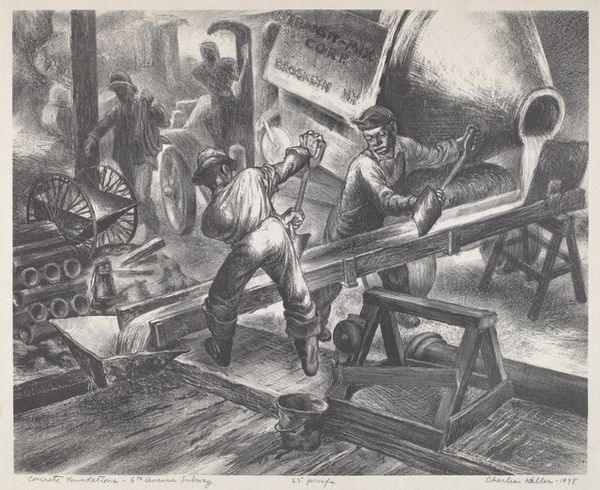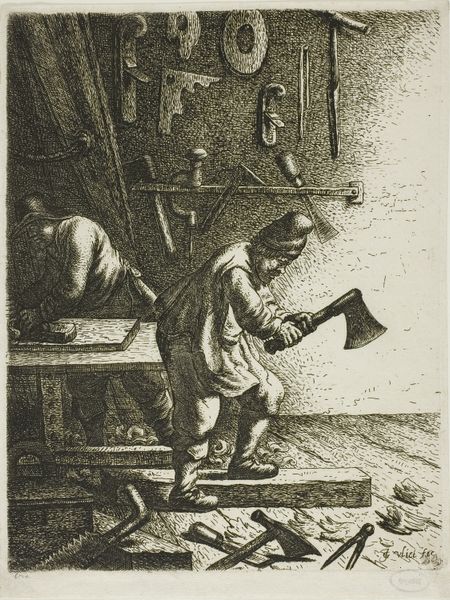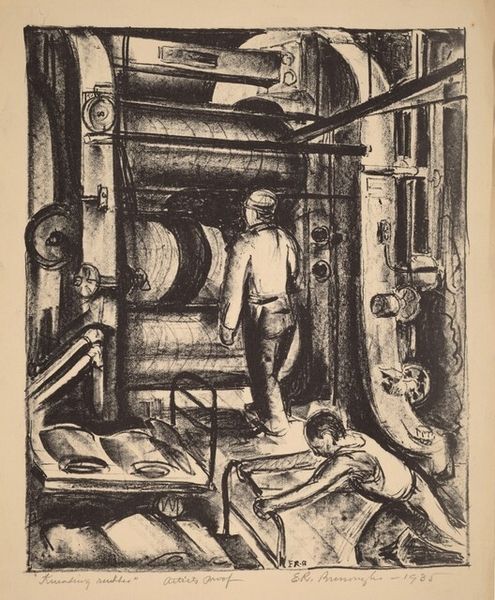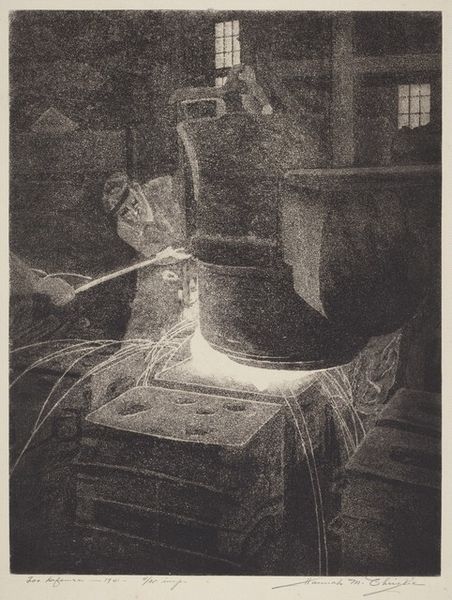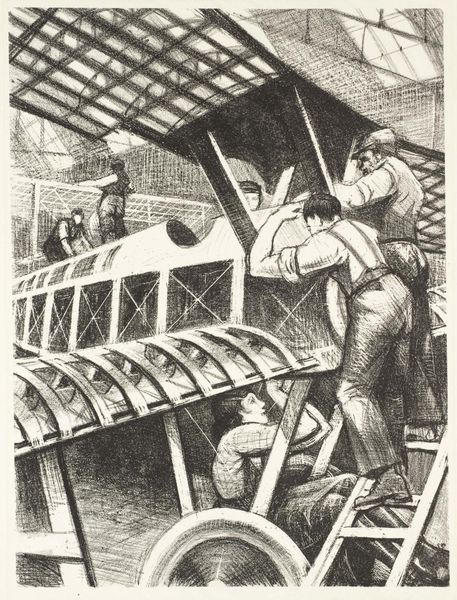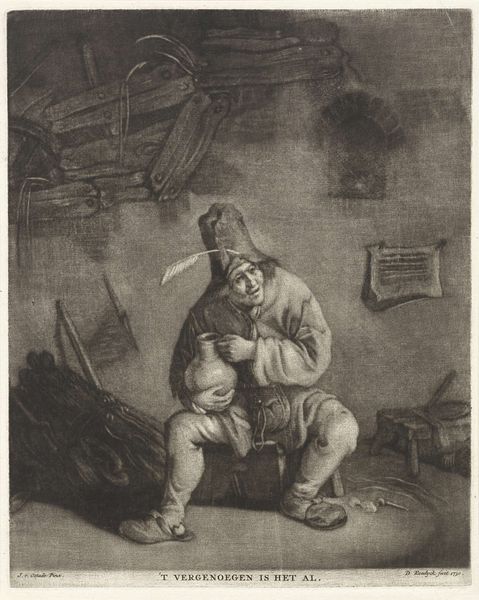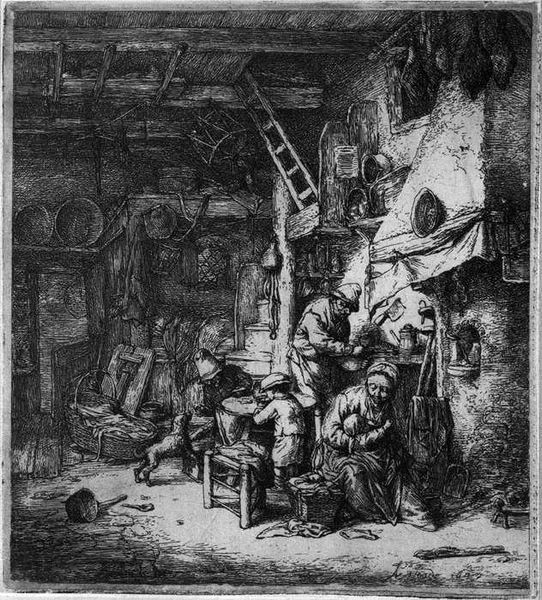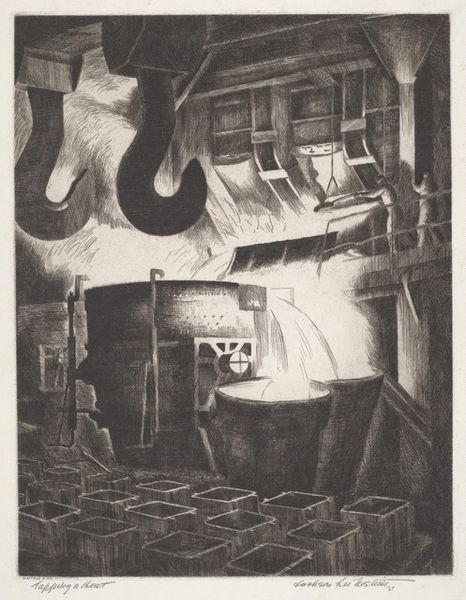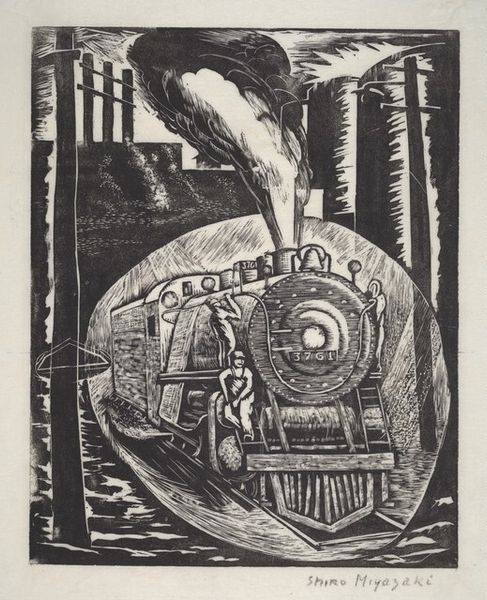
print, etching
# print
#
etching
#
line
#
genre-painting
#
history-painting
#
realism
Copyright: National Gallery of Art: CC0 1.0
Curator: Here we have Bryant Pringle’s etching, “Arc Welder,” from approximately 1940. What's your initial read of it? Editor: Stark. The contrast between the deep blacks and the intense white sparks is almost overwhelming. There's a density to the crosshatching that gives it a very tangible weight, especially on the figure. Curator: Absolutely. And that weight feels appropriate. Think about the period; 1940 situates this piece right at the cusp of America’s industrial might ramping up for the war effort. We're looking at a blue-collar worker, vital to that machine. Editor: Visually, the composition really directs our focus. The converging lines, particularly of the metal beams and the figure’s position, all lead to that blinding focal point of the welding arc itself. Curator: Indeed. But the individual’s posture, almost crouched and shielded, speaks volumes. We should read that through the lens of labor, class, and the representation of the working body. Welding was crucial but hard and dangerous labor, frequently causing damage to hearing and sight; it also posed risks to reproductive health, particularly among female laborers. It’s quite heroic. Editor: Yes, but heroic rendered in incredibly precise detail! Note how Pringle captures the textures of the welding mask, the rough clothing, even the small tools scattered around the figure. There's such a tactile quality achieved through such careful lines. Curator: Precisely! But isn't that precision itself significant? It transforms the individual into almost an anonymous, mechanical component, fitting perfectly within a vast industrial complex. A subtle commentary, perhaps, on the human cost? Editor: A good point. Though I also think the careful balance he strikes in the lines transforms this manual task into something of elegant art. The lines make this artwork less realistic, in ways, even though the composition tends toward realism. Curator: This image asks so much about work, the body, and war, and in it, reminds us how gendered assumptions about work often are! A very charged piece to reflect upon then and even more so now! Editor: I agree; and I feel as if I have only now begun to see the nuances embedded in its sharp lights and dense lines.
Comments
No comments
Be the first to comment and join the conversation on the ultimate creative platform.
